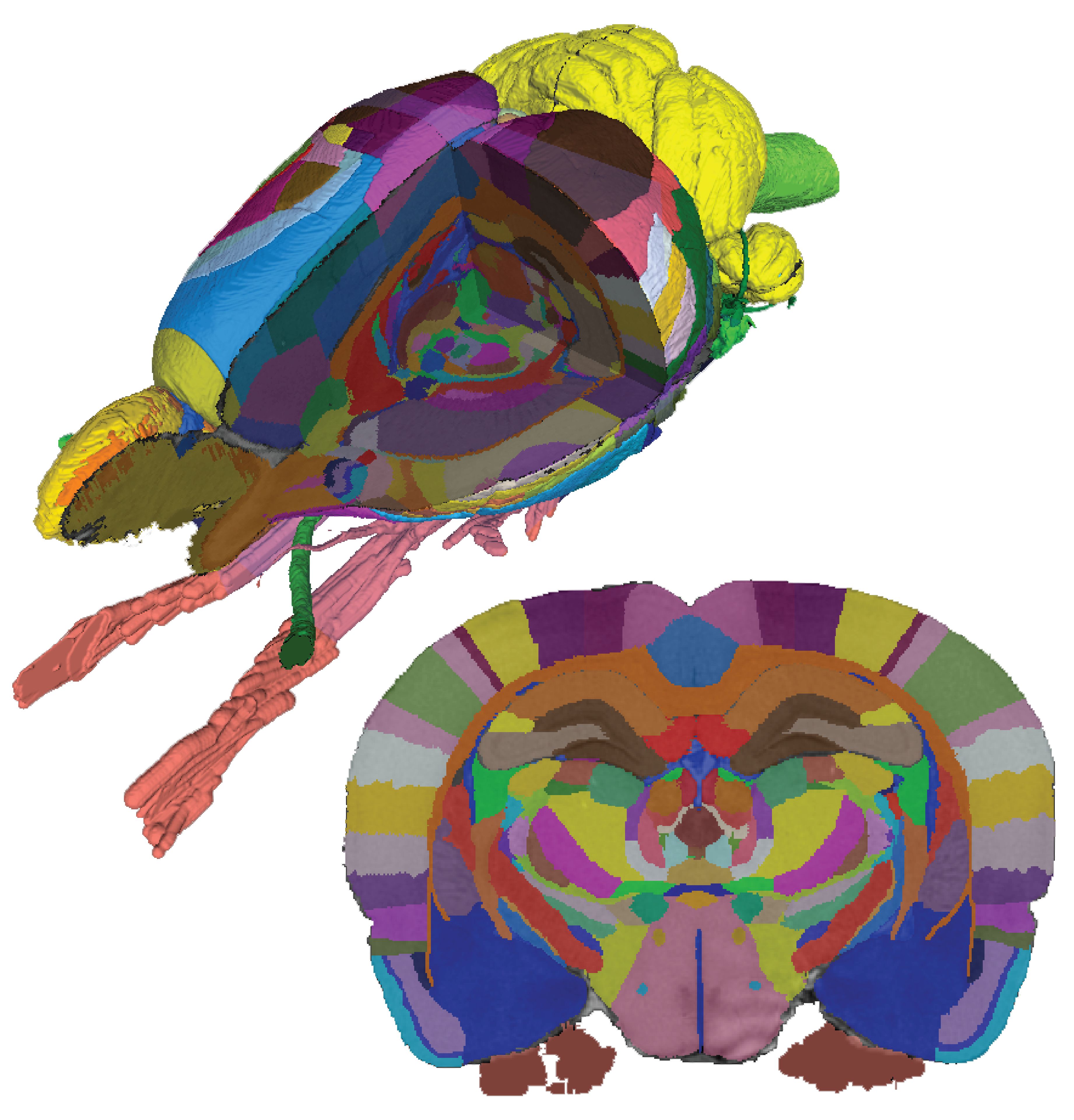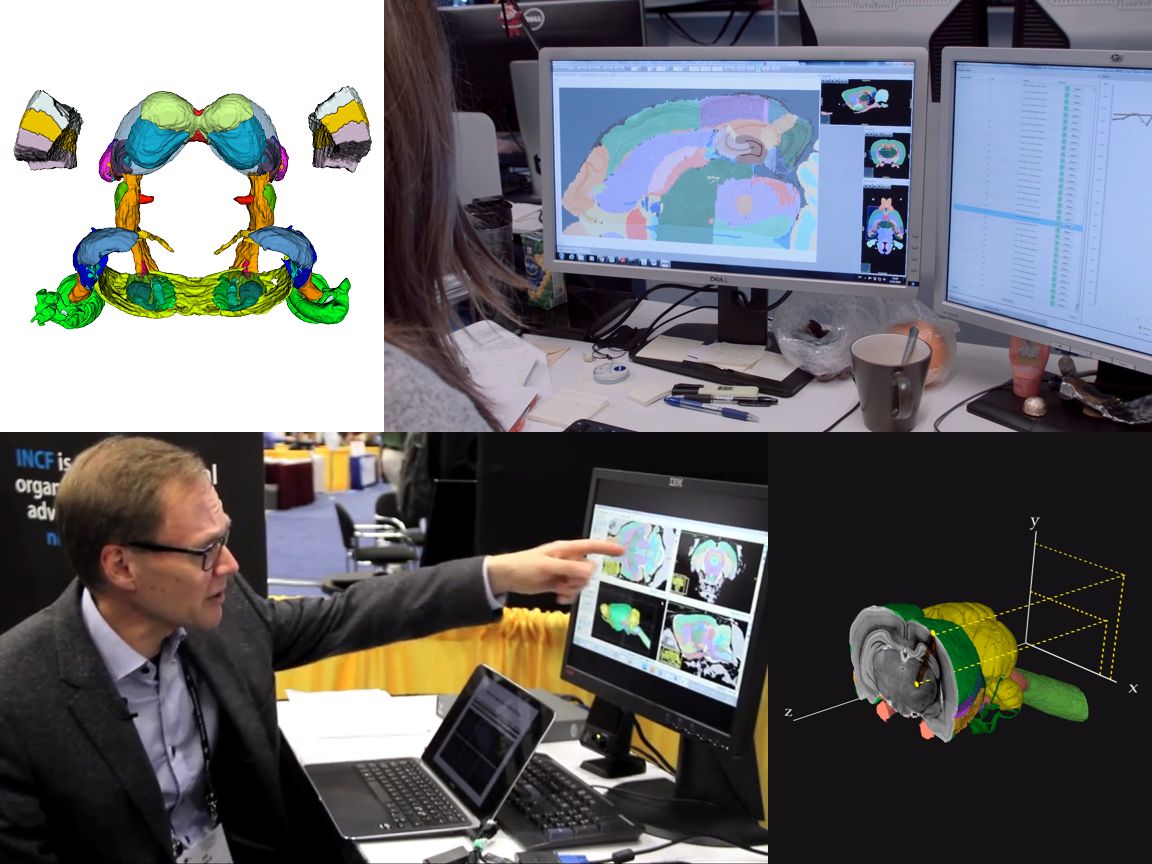Downloads
As of October 2023, the WHS rat brain atlas has been downloaded 33000 times.
The Waxholm Space rat brain atlas is a detailed volumetric atlas of the rat brain, to which a wide range of anatomical and functional data have been registered, including detailed data showing cellular distributions, axonal pathways, and gene expression patterns. EBRAINS provides a visualization interface, enabling researchers to explore and compare different aspects of the rat brain in 3D space.
The Waxholm Space (WHS) Rat Brain Atlas contains comprehensive anatomical delineations of the adult rat brain's brain regions and fibre tracts. The atlas was acquired from an 80-day-old male Sprague Dawley rat using high-resolution ex vivo magnetic resonance and diffusion tensor imaging (MRI/DTI) at the Duke Center for In Vivo Microscopy (Durham, NC, USA). It includes spatial coordinates and the position of bregma and lambda, facilitating conversion to stereotaxic coordinates.

The atlas, the MRI/DTI volumes, and the diffusion tensor data are available, along with labels and configuration files for ITK-SNAP, the Mouse BIRN Atlasing Toolkit, and PMOD. The atlas is shared in a standard volumetric format (NIfTI) containing delineations of 222 brain regions, accompanied by a label file with the name and ID of each region.
Waxholm Space Rat Brain Atlas from NITRC
DownloadAtlas dataset and publications
Find datasetsThe Waxholm Space Rat Brain Atlas is the backbone of spatially-focused workflows and tools that support spatial registration of new data to the atlas template, semi-automatic analyses using the brain region hierarchy and delineations, and visualisation of extracted data in 3D.
The atlas is incorporated in the QuickNII tool for spatial registration of serial 2D images, and employed in the QUINT workflow for extracting and quantifying labelled objects from images registered to the atlases.
The Waxholm Space rat brain atlas is in active development by the atlasing team at the Neural Systems Laboratory, Institute of Basic Medical Sciences, University of Oslo, with contributions from experts on the anatomy of individual brain regions. The level of detail in the atlas is evolving, with each subsequent version offering new and refined anatomical delineations.
As of October 2023, the WHS rat brain atlas has been downloaded 33000 times.
Over 20 anatomists, experimental neuroscientists, students of medicine and neuroscience, software developers.

The atlas repository at the NeuroImaging Tools & Resources Collaboratory (NITRC) is accompanied by a public forum that gives you the opportunity to ask questions, suggest improvements, and contribute to the discussion around the use and development of the atlas. A brief introduction to the latest developments is given in the atlas wiki.
The anatomical delineations, the MRI template, as well as surface representations of each anatomical structure have also been incorporated into the Analysis of Functional NeuroImages (AFNI) toolbox. For AFNI-specific issues, please refer to the AFNI message board.
Join the discussion on NITRC
User forumSee the latest developments
WikiLearn more about using the atlas in AFNI
Message boardsiibra-explorer is built around an interactive 3D view of the brain displaying a unique selection of detailed templates and parcellation maps for the human, macaque, rat or mouse brain, including BigBrain as a microscopic resolution human brain model at its full resolution of 20 micrometres.
Software for 2D image registration to 3D atlas.
EBRAINS is open and free. Sign up now for complete access to our tools and services.